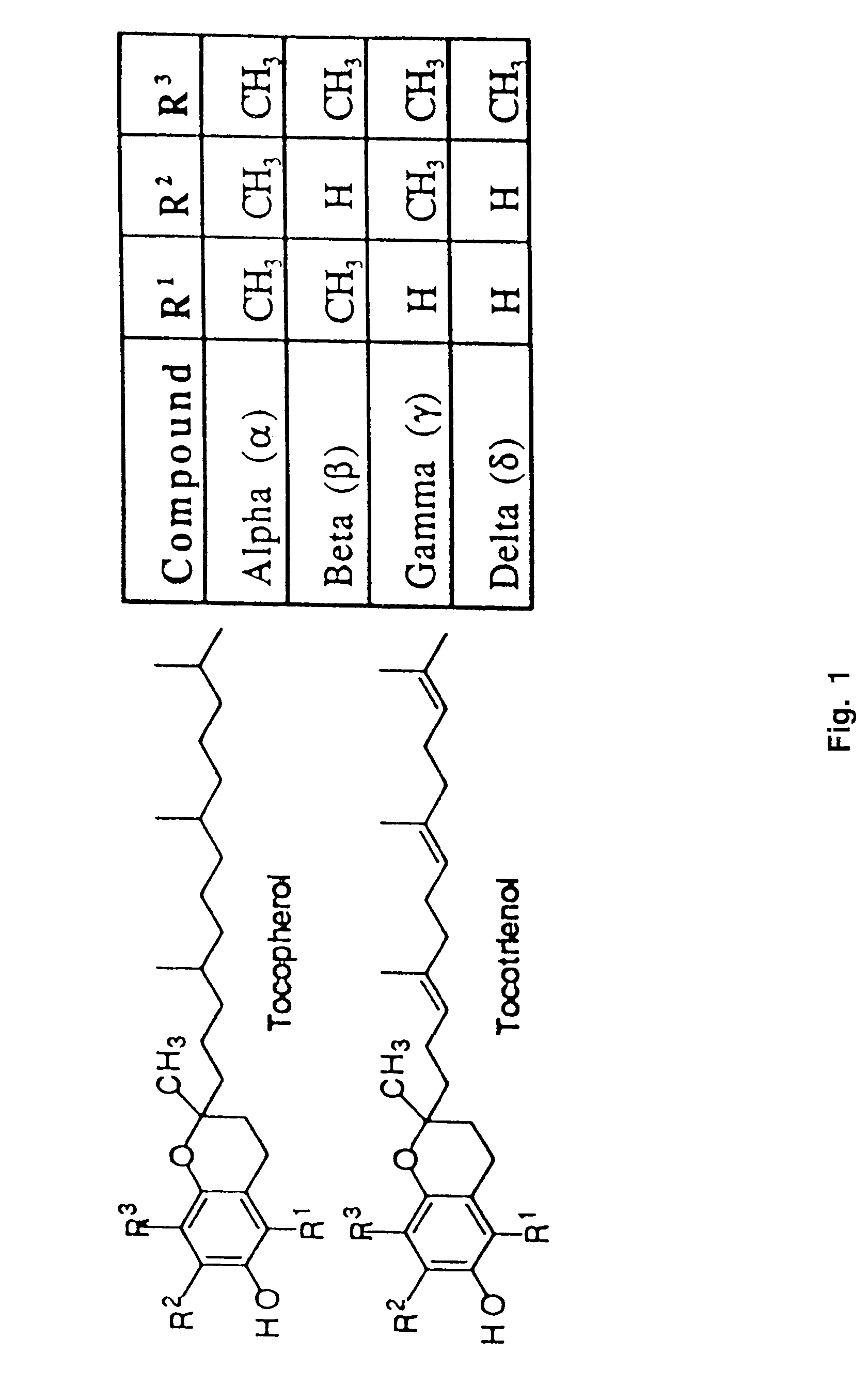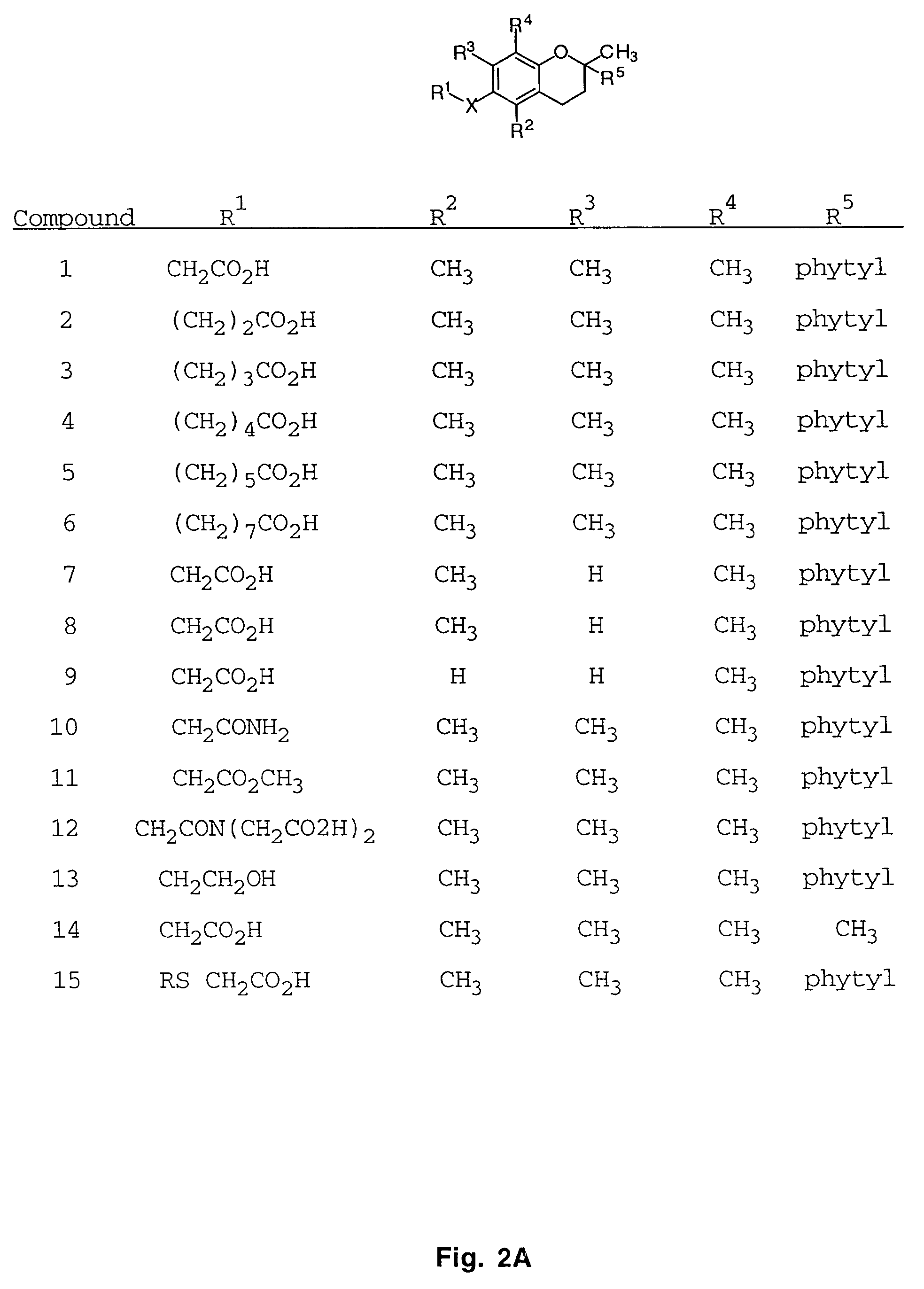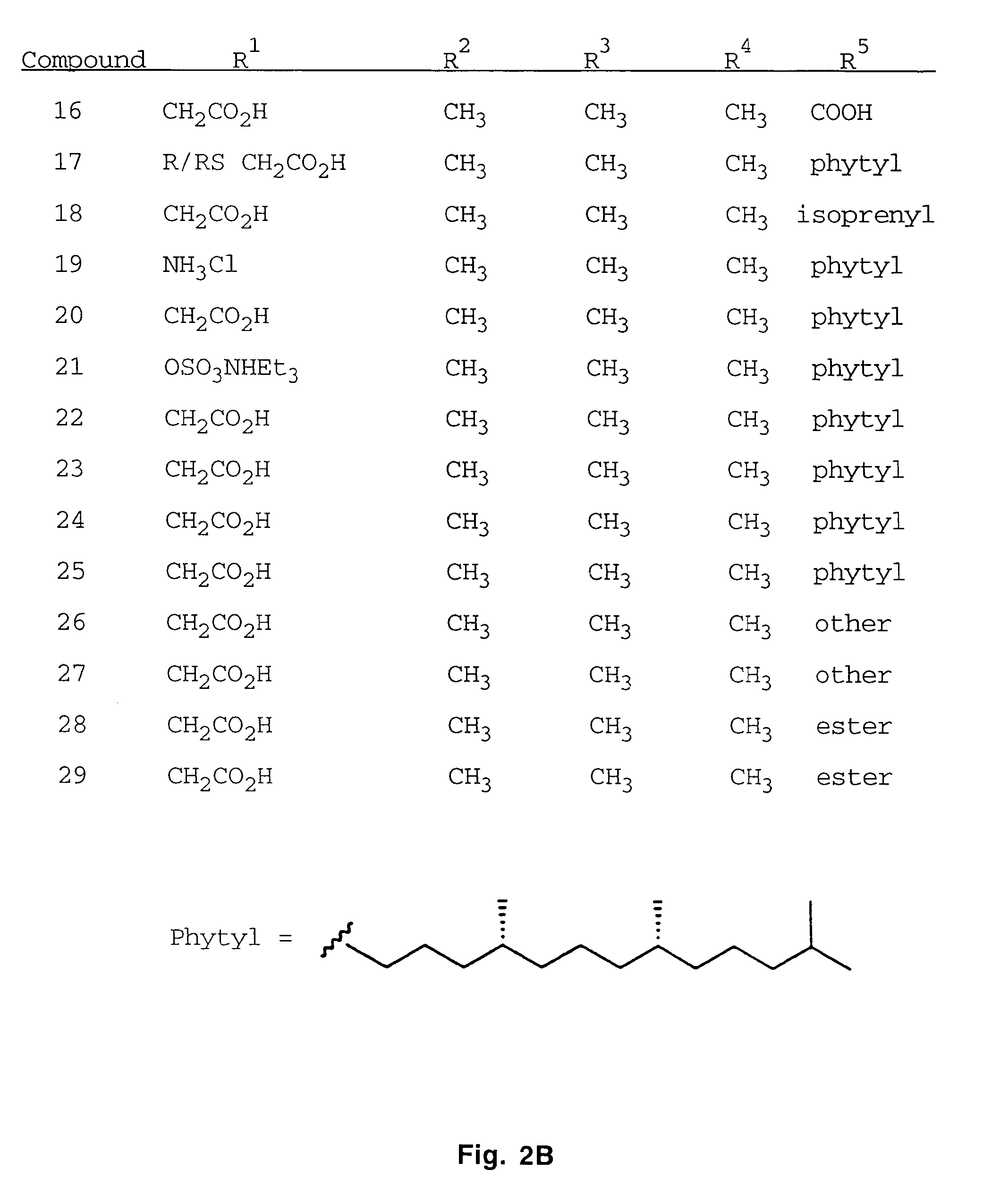Tocopherols, tocotrienols, other chroman and side chain derivatives and uses thereof
a technology of tocotrienols and chroman, which is applied in the field of organic chemistry and antiproliferative and proapoptotic compounds, can solve the problems of high metastaticity, difficult to treat, and cancer cells that exhibit defects in mechanisms
- Summary
- Abstract
- Description
- Claims
- Application Information
AI Technical Summary
Benefits of technology
Problems solved by technology
Method used
Image
Examples
example 1
Synthetic Organic Methodology
[0049]The synthesis of a variety of tocopherol, tocotrienol, and other chroman derivatives with or without derivatives of saturated phytyl or unsaturated isoprenyl side chains or analogs thereof is possible via structural modification of the chroman ring system (FIGS. 3-6) and heteroatom substitutions (N or S) for the chroman ring oxygen (FIGS. 7A and 7B). The structural variables R1, R2, R3, R4, R5, and X illustrate the groups on the chroman group that are modified and Y represents either oxygen, or heteroatom substitutions (N or S) for the chroman ring oxygen. Using alkylation chemistry, a large number of compounds containing different R1 groups can be synthesized, particularly when X is oxygen. After alkylation, further chemical modification of the R1 groups permits the synthesis of a wide range of novel compounds. Bromination of the benzylic methyl groups of the chroman group provide intermediates that permit variation of the R2, R3 and R4 groups. Va...
example 2
Synthesis and Characterization of Novel Tocopherol Compounds 2,5,7,8-tetrametbyl-(2R-(4R,8R,12-trimethyltridecyl)chroman-6-yloxy)acetic acid (1)
[0051]
[0052]A solution of R,R,R-α-tocopherol (0.5 g, 1.16 mmol) in N,N-dimethylformamide (20 mL) was treated with methyl bromoacetate (3.4 g, 8.3 mmol) and an excess of powdered NaOH (1.2 g, 30 mmol). The resulting yellow slurry was stirred vigorously for 24 h at room temperature. The reaction was acidified with 5 N HCl and extracted with diethyl ether (3×30 ml). The combined ether layers were washed with H2O (3×30 ml) and brine (1×30 ml), and then dried with Na2SO4. The ether solution was concentrated to a yellow oil that was purified by silica gel chromatography eluting with 19% (v / v) EtOAc and 2% acetic acid in hexanes. The resulting yellow liquid was dissolved in diethyl ether (30 ml), washed with H2O (3×20 mL) and brine (1×20 mL), and then dried with Na2SO4. The resulting solution was concentrated to a light yellow oil and dried in vacu...
example 3
Synthesis of all-racemic 1-aza-α-tocopherol analogs: Phytyltrimethylhydroquinone (31)
[0134]
[0135]The solution of trimethylhydroquinone (30, 7.5 g, 49.28 mmol), isophytol (12 g, 40.47 mmol), anhydrous zinc chloride (3 g, 22.01 mmol) and 0.4 mL of glacial acetic acid in 60 mL of absolute ether was refluxed for 1 h. The solvent was then removed in vacuo at 50° C. and the slurry obtained was dissolved in a mixture of 50 mL of petroleum ether and 20 mL of 70% aqueous methanol. The emulsion formed was destroyed by the addition of 20 mL of ether. The ether layer was dried (Na2SO4) and evaporated in vacuo to give a red solid paste that was triturated vigorously with 70 mL of petroleum ether. After cooling to −78° C., the suspension was centrifuged and the supernatant petroleum ether was decanted. Cold petroleum ether (10 mL) was added to the crystalline mass, and the operation was twice repeated to give 10 g (47%) of sticky white solid, which was used in the next step without further purifi...
PUM
| Property | Measurement | Unit |
|---|---|---|
| v/v | aaaaa | aaaaa |
| v/v | aaaaa | aaaaa |
| v/v | aaaaa | aaaaa |
Abstract
Description
Claims
Application Information
 Login to View More
Login to View More - R&D
- Intellectual Property
- Life Sciences
- Materials
- Tech Scout
- Unparalleled Data Quality
- Higher Quality Content
- 60% Fewer Hallucinations
Browse by: Latest US Patents, China's latest patents, Technical Efficacy Thesaurus, Application Domain, Technology Topic, Popular Technical Reports.
© 2025 PatSnap. All rights reserved.Legal|Privacy policy|Modern Slavery Act Transparency Statement|Sitemap|About US| Contact US: help@patsnap.com



